

Prior Episodes | 7959 (18 BBY) | Next Episodes
Continuity & Analysis
Star Wars: The Bad Batch - Spoils of War (2023) [S2E1]
The Bad Batch plans a risky heist.
Star Wars: The Bad Batch - Ruins of War (2023) [S2E2]
The Batch must decide who to trust as they plan their escape.
Star Wars: The Bad Batch - The Solitary Clone (2023) [S2E3]
Clones battle against a Separatist hold out.
Star Wars: The Bad Batch - Faster (2023) [S2E4]
The team enters the colorful and dangerous world of racing.


CONTINUITY
These four episodes are about Clone Force 99 settling in to their new reality. 'Spoils of War' and 'Ruins of War' form a single storyline
about the Serenno operation. Aynaboni, Desix, and Serolonis are seen for the first time. Six worlds are seen in these episodes:

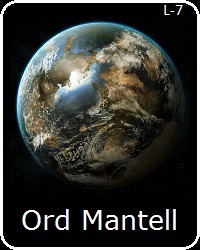
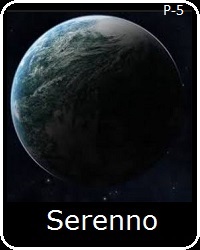


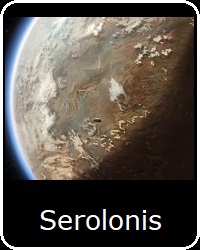
It is uncertain exactly how long it has been since the end of Season 1, however the best estimate is between 2 and 4 months. This would place the first
episode of this season anywhere between 4 and 8 months after Episode III, depending on exactly how much time the first season covered. Either
estimate can be reconciled with the later episodes of this season which can be firmly dated, and only really effects how much time takes place in between
the first 8 storylines of this season. Omega is slightly older and has gotten very good with her energy bow weapon, while Hunter states that they have
"stayed off the Empire's radar since Kamino". In 'The Solitary Clone', Crosshair indicates that he was stuck on Kamino for "32 rotations." This is assumed
to mean standard rotations, which are Coruscant days equivalent to 24 hours on Earth, meaning he was stranded there for a month. He underwent at
least a brief period of recovery as discussed in the episode, however this would only suggest a month and a half at most. If a longer recovery of about
a month is assumed to better account for the passage of time, it would now be 2 months after Season 1 ends, which is also approximately 4 months
after Episode III, or at most 5. These could also have been Kamino rotations, which could be slightly longer, allowing for as much as a couple months
in additional time. Either way, it seems that these four episodes are set in the second quarter of 7959 (18 BBY).
- Aynaboni is a terrestrial planet located in the extreme west of the New Territories region of the Outer Rim. It is a habitable world with ample water,
large oceans, and regular rainfall. The planet has a moderate climate, including a warm tropical zone wherein can be found islands.
The existence of a native ecosystem including significant plant life and large animals suggests there is almost certainly continental landmasses
where this life evolved. Animals living around the one island seen in this material include Aynaboni's version of fish, birds, and large,
arthropod-like creatures called aggrocrabs.
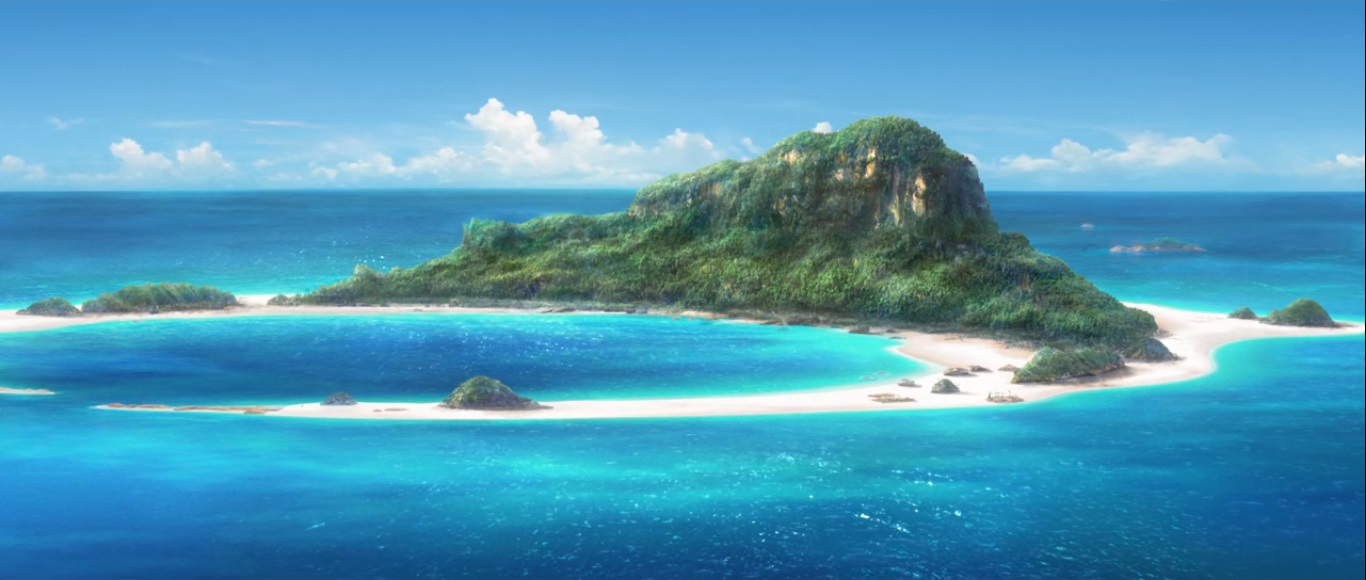
- Count Dooku is regarded as "a Jedi who betrayed the Republic and led the Separatists in a war", even by highly informed clones who occasionally worked
with the Jedi. Dooku is known to have been a former Jedi, so could rightly be regarded as such, nevertheless the fact that he is not identified as a Sith
indicates how obscure the Sith are, and how little the difference between the Jedi and the Sith is understood by non-Jedi. Most in the galaxy who
are aware of the concept of a Sith would regard them as rogue Jedi, and in the case of Dooku most would have regarded him in that way, even if
they had heard somewhere during the Clone Wars that he was a Sith Lord. The implications of being a Sith are not widely known or understood.
Main Article: Awareness of the Jedi and the Sith
- Cid has been "paying attention to what's happening out there", and is therefore aware that "it's only a matter of time before the Empire comes" to
Ord Mantell. The Empire initially ignores stable, Rim worlds which were not a principal player in the politics of the Clone Wars, due in part
to their limited resources and at the same time as part of the gradual imposition of Imperial rule. Ord Mantell is an established component
of the interstellar society, and thus does not pose any significant danger of resisting whatever central authority rules on Coruscant. It is
therefore safe and even advantageous for the Empire to allow life to continue unmolested in such places while it establishes itself in more
critical locations. This is similar to the situation on the planet Annoo, seen in Droids and set 3 years after these events. Annoo is in
many ways similar to Ord Mantell in that it is a regional hub with a long-established post-colonial population of medium importance and
minimal political significance. It is clear that Imperial bureaucracy had already been implemented on Annoo by that point, however after
3 years the Empire had still made no efforts to establish a military presence there. The Empire's policies in this manner are guided by their
capacity to deploy forces and resources amongst the millions of worlds within their domain. Cooperative and non-threatening worlds are
initially left alone pending future integration. The eventual arrival of full Imperial occupation will inevitably lead to a heightened security
regime, along with a corresponding decline of both unregistered trade and independent, local business.

Where is everybody on Serenno? Why does no one detect the Batch arriving and question them? Why is there zero
Imperial fleet presence? Any planet with any significant population would be monitoring incoming traffic, if only for
the sake of air traffic control. The potential traffic around any planet of even moderate population would necessitate
at least the exchange of navigational signals. Considering that this was a central Separatist planet, whatever local
equipment and facilities responsible for this would now be run by the Imperial occupation, especially since the war has
only been over for several months. In addition, the Empire should be monitoring traffic around the world as a matter
of security. There is not a single ship in orbit to monitor this important planet, nor a fighter patrol in orbit or in
the atmosphere. In legendary material, Serenno was supposed to have a population in the billions, but even were it
only in the millions, there would still be huge amounts of incoming and outgoing civilian traffic, and at least a minimal
Imperial force to keep an eye on this newly occupied world. It is seen that Serenno City has been blown to bits by
Imperial bombardment, but what about the many thousands of other cities and towns on the planet? The action of
this storyline takes place primarily in the greater region of Serenno City, which is largely undeveloped, but that does
not explain why there is no orbital traffic or monitoring, or why there is virtually no Imperial presence. Even disney's
non-canon novels which they consider canon indicate that the capital city of Carannia was not destroyed at this time,
so there is little reason to believe most cities or towns on the planet suffered the same fate as Serenno City. The lack
of the evidence of a planet's unseen, large population and the infrastructure that comes with it are typical of disney
SW, although certainly this issue began with some of The Clone Wars material. Most worlds seem to have one city
with a meager population, and even if they are portrayed as having many cities, the social and political implications
of everyone outside of the capital or main city are ignored. The disney SW galaxy seems to be barely populated, and
is portrayed as a vast frontier full of planets which are stated to be important but which are essentially uninhabited.
Main Articles: Galactic Population & Scanners, Sensors, and Cloaking Devices
- Class 4 Container Transports are large bulk freighters designed by Kuat Drive Yards to link up with different modular trailers, and cargo containers in
particular. They were first seen in canon 15 years later in Rebels, but are revealed here to have first entered service by early 7959 (18 BBY).
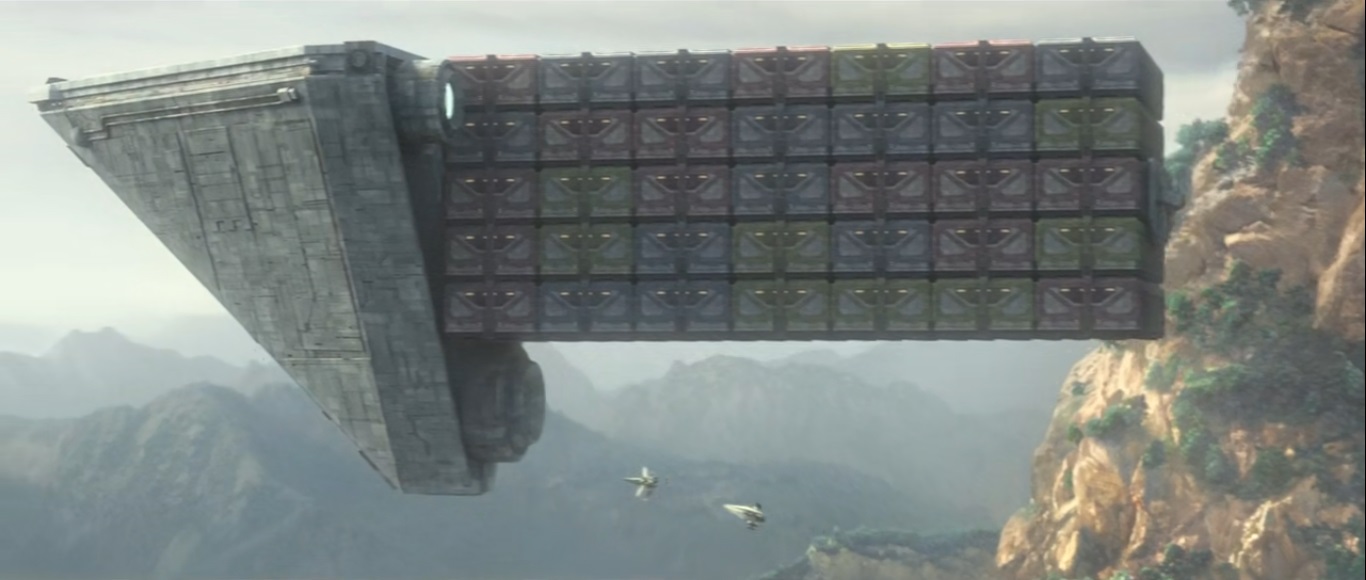
- The Republic moved to take control of Serenno and Dooku's former home immediately after the Separatist surrender, estimated to have been at least
several months earlier. Serenno City was leveled by orbital bombardment, presumably in a display of retribution, possibly as part of operations
to eliminate loose threads and evidence connected to Sidious or his former apprentice, or possibly for both reasons. The contents of Dooku's
home, especially his massive horde of valuables, were seized by the Empire to be taken off world. "It is safe to assume that the majority of Dooku's
fortune came from the many worlds he controlled and exploited." This appropriation and direct theft was done in the name of the war effort,
as seen during the Clone Wars, and Dooku apparently exploited his own people in the form of taxation under the same guise.
- The upper forest region of Serenno is the relatively uninhabited boreal forest which circles the planet at its northern subpolar latitudes, similar to Earth
or any planet with both ice caps and warm equatorial temperatures. These forests are usually home to coniferous trees or the evolutionary
equivalent in alien ecosystems, which have sap or something similar to prevent water from freezing within the plant in cold temperatures.
This allows the plant to collect energy from sunlight during the many cold months near the polar extremes, unlike plants without this feature,
and as a result most boreal forests are almost entirely dominated by this form of tree. Serenno City must lie near the boundary of this region
relative to the size of the planet, meaning that although the Batch may have crashed hundreds of kilometers from that city it was likely still
the nearest to them in terms of planetary geography.
Main Article: Planetology
- The Imperial force begins monitoring all comm channels once intruders are detected, suggesting they could intercept their communications. The Bad Batch
enacts "Plan 00", which is their code name for going radio silent, in response to comm channels being monitored. Their use of a signal is intercepted
by the Empire, but since they used a coded transmission they were unable to hear the message. It is possible such a transmission could be decoded,
depending on the quality and nature of the encryption used, however in this instance the necessary personnel, and possibly equipment, are not
present. This is not exactly a matter of hyperspace communications, but it is indicative of communications systems in general use.
Main Article: Hyperspace Communications
- Tech is able to detect the heat source of Romar Adell's home from a distance of 200 meters, and to establish its distance and bearing. This suggests that
scanners are relatively good at thermal scanning, considering the distance and the heat source of moderate intensity, to be able to detect it from
a minimum of 200 meters. It is likely that it could be detected from greater distances, possibly even several times that distance.
Main Article: Scanners, Sensors, and Cloaking Devices
- The people and culture of Serenno are referred to as Serennian. Their culture is typical of post-colonial societies across the galaxy, which have their own
unique variations of the primarily Human-dominated interstellar culture, usually reflecting the particularities of their planet's ecosystem and its
early colonial history. This can obviously vary greatly between different cities or regions on a planet, including culture, art, music, and historical
memory. Tech thinks of Serennians as Separatists rather than one of millions of unique cultures, due to his age as a clone and reason for being.
Clones don't have any history outside of the war they were made to serve in, and have a specifically limited education. It is typical of people in
general, as well as those who have fought in wars, to think of 'enemy' nations as monoliths rather than assemblies of smaller, unique societies.
- The Bad Batch have been reported as KIA during the destruction of Kamino, which Rampart would have had good reason to believe had been the case.
This seems to suggest that Crosshair did not mention that he saw them safely leave the planet. Rampart chooses to kill Captain Wilco to prevent
a contrary report about their survival reaching Moff Tarkin, out of concern that he will be held responsible for failing to eliminate them.
As such, the Empire at large officially considers them deceased at this point, and is not actively looking for them.
- Desix is an inhabited planet located in the Suolriep Sector, in the Slice region of the Outer Rim. It has three moons, and although its atmosphere
is breathable it is relatively barren and seemingly arid. Its surface is prone to intense sandstorms, and although some agriculture is possible
on Desix, it seems to be contingent on farming technology. It would seem that this world has useful minerals and probably microbes in
its soil sufficient to support such activity, however the lack of even a scant ecosystem suggests that this world had minimal terraforming
potential or success. Nevertheless, the existence of the post-colonial population here indicates that whatever value in soil or mineral
wealth which attracted settlers outweighed Desix's inhospitable qualities. The capital city is built in a contained design which protected
its inhabitants from the harsh conditions, as was likely the case with all settlements on the planet. Desix had a large enough population
to be considered a member world of the Separatist Alliance, and thus there must be many other settlements.


Governor Grotton is part of the Empire's newly installed military government, however his insignia is the block insignia of
a Lieutenant in the regular military, with red tiles on top and blue tiles on bottom. Military government insignia have red
tiles at the bottom, and blue on top, and thus this is obviously incorrect. The reason they chose this completely incorrect
insignia is almost certainly an attempt to maintain continuity with Moff Jerjerrod's incorrect insignia from Episode VI,
which was a costuming error or oversight which resulted in the majority of Imperial officers wearing the wrong insignia.
This clearly demonstrates the problem with not identifying continuity errors, since reusing incorrect insignia or creating
new insignia based on incorrect ones compounds the error. This is not the correct insignia for a Governor.
Main Article: Ranks and Rank Insignia
- Tawni Ames is Governor of Desix and had served as the planet's Senator in the Separatist Parliament where she was an ally of Mina Bonteri.
Ames was one of the many honest Separatist leaders who believed in the politics of planetary independence, like Bonteri, and therefore
she is unwilling to concede her planet's sovereignty despite the Republic/Empire's victory in the war and its ideological implications.
- The Defense Recruitment Bill is the legislation in the Imperial Senate to authorize the augmentation and eventual replacement of the clone army with
enlisted soldiers from amongst the regular population. This is apparently the second vote on this subject, with the measure having been defeated
in the first attempt by its proponents to put it forward. Clones are aware of the purpose of the bill, and are concerned they will soon be replaced.
- Vice Admiral Rampart has an office at Imperial Military Headquarters on Coruscant, which is where the High Command of the Navy is said to be located.
None of the Imperial Navy's leading admiralty have ever been shown, but presumably the High Admirals of Sector Command operate from this
location, and are probably rarely seen in the field. It is unknown who is Rampart's immediate superior in the command structure, which should
be a Fleet Admiral, or if his purview is entire outside of a specific fleet's jurisdiction, he may report to a full Admiral or directly to one of the High
Admirals. Rampart is also known to be a member of Moff Tarkin's command staff for the Outer Rim, who he reports to directly, which suggests
the likelihood that he may only interact with Navy High Command in an indirect fashion via reports while holding that assignment. He does seem
occasionally to have too much authority for an officer of his rank, probably as a result of confusion about the importance and position of Vice
Admiral Motti in Episode IV, who will be at that time the senior Navy officer on Tarkin's staff. Later episodes of this season, as well as Tarkin's
insignia in the pilot episode of this series, clearly indicate the existence of many higher ranked Navy officers in the Imperial military. Rampart's
office at Military HQ lends credence to the notion that Tarkin and other high-level Imperial authorities principally operate from Coruscant.
Main Article: Ranks and Rank Insignia
- Commander Cody is now serving in the Imperial Naval Infantry Corps. He was last seen an estimated 6 or more months earlier in Episode III,
attempting to blast Obi-Wan with a tank. His conversation and comportment suggest that he has mostly reverted to his established
personality, with the effects of Order 66 having worn off, and that he has begun to question that order like an increasing number of
clones. He is clearly savvy enough to realize it is important not to let on to others too much of his misgivings about turning on the Jedi.
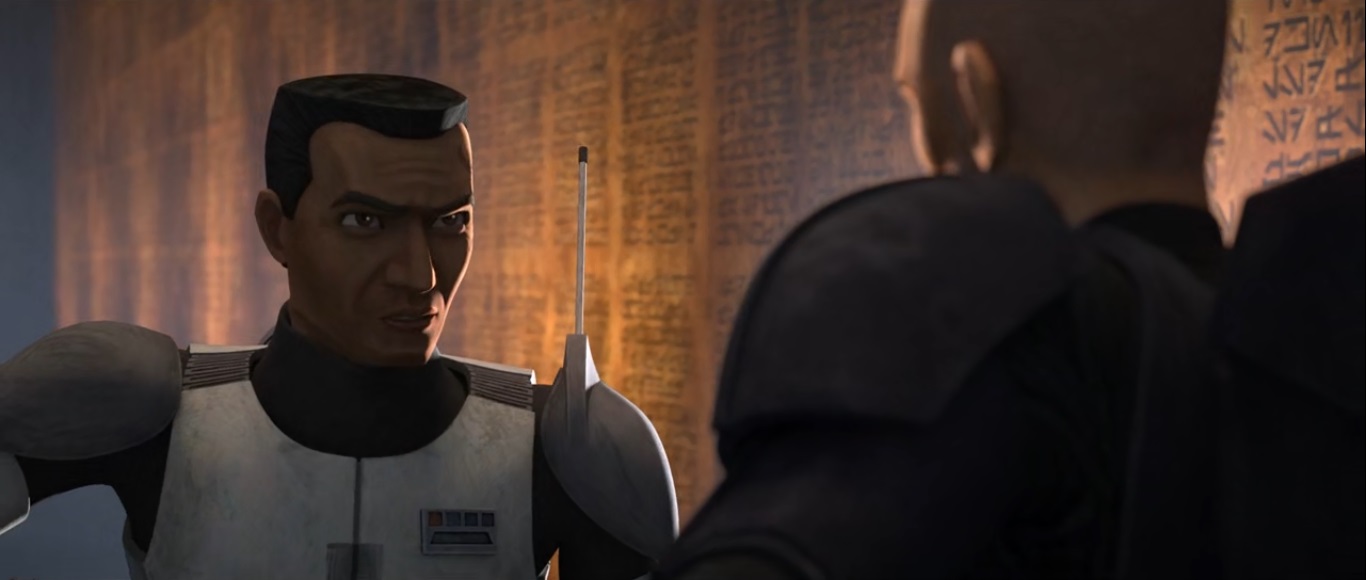

Cody's rank insignia is incorrect. This was the same insignia he wore during the later seasons of The Clone Wars, which
differs slightly from his insignia in Episode III. This was presumed to have been introduced in an attempt to show that Cody
was promoted in grade as Commander between then and Episode III. Whether or not the creators were being deliberate
with this insignia in the earlier seasons, the creators of Season 7 just kept using the same insignia even during events set
in the hours before the opening scene of Episode III. It could still be explained that Cody was promoted off-screen during
the beginning of that film, however this would be yet again a highly unlikely explanation having to be invented to explain
why the disney SW creators are so poor at rank insignia continuity. Although Cody's insignia in Episode III is clearly visible,
he is seen here after those events having reverted to his earlier insignia. This compounds the issue and undermines
the notion that Cody was promoted at all, suggesting that Cody's insignia in The Clone Wars was a continuity error in that
series. Regardless of that possibility, Cody's rank insignia in his appearance in this series is a definite continuity error.
Main Article: Ranks and Rank Insignia
- It is known by at least some clones that Clone Force 99 "went rogue after Order 66 came through", probably due in part to the fact that their unit was
amongst the most well-known amongst the clones. Cody judges this as not surprising considering their unique design, but notes that it is already
well-known amongst the clones that increasing numbers of 'regular' clones are going AWOL or openly voicing discontent regarding their role in
Order 66. Cody joins their ranks after the unpleasantness on Desix. The Empire has taken notice, only fueling their resolve to create a replacement
army of non-clone soldiers. It is not surprising that clones would begin to act this way after the effects of the inhibitor chip activation began to wear
off. They were trained and conditioned to be soldiers for the Republic, and inevitably absorbed many republican principals and values which are
increasingly in conflict with the nature of the Empire, even though it is only marginally different from the last stages of the Republic.
- Dooku was right all along, having seen that the Republic's corruption problem was systemic and incurable, and that the Republic would inevitably "collapse",
either entirely, giving rise to empires and wars, or abandon its values in favor of a galactic security state. He therefore attempted to raise an alliance of
idealistic and well intentioned factions to stand against this coming tyranny, which led him haplessly into a fatal alliance with Darth Sidious. Dooku thus
became an integral part of the process, simultaneously helping the Republic to make its terrifying transition while also raising a competing state which
sought to destroy the Republic outright and replace it with a confederate system, essentially self-fulfilling the prophecy which set him down this path.
That does not mean there was an alternative, as the corruption would have led to a collapse of the Republic or a new galactic tyranny without any further
interference from the Sith, it just would have happened in a more gradual, less-dramatic, and less-controlled manner.
- A central element of Sidious' plan is the perpetuation of conflict, and thus the only threat to his design is the possibility of peace. He used the essential nature
of the conflict he engineered in the Clone Wars to every advantage, not the least of which was primary issue of planetary sovereignty. Separatist systems
wanted decentralization of the galaxy, and as a result the Republic became increasingly devoted ideologically to centrism, which is ultimately imperialism.
The Separatists would not stop fighting until their sovereignty was recognized in principle, and the Republic would not recognize the Separatist state since
that would legitimize their struggle. This kept peace talks from materializing generally, and whenever diplomatic-minded Senators from the two sides would
attempt negotiation, the Chancellor was able to reject it on political and philosophical grounds. The few times when that proved insufficient, the Sith could
easily use their power to manipulate events and individuals to prevent any possibility of peace. War also makes peace more difficult to achieve, as many on
both sides will grow to desire revenge and retribution more than peace. The Republic's ideological position meant that the only peace which would be
acceptable was through submission to Coruscant. This meant that the war would settle nothing, as not even minimal concessions to Separatist ideological
interests would result from the war. On the contrary, the nature of the war meant that the inevitable occupation and removal of treasonous, planetary
governments would require the Republic to harden into an Empire. Those amongst the Separatists who refuse to accept that the end of the war meant
they were now under Coruscant's rule again would find that most in the galaxy are too weary of war to join their resistance, just as Sidious intended.
At the same time, the maximalism of the Republic/Empire ensured that the unsettled sovereignty issue of the Clone Wars would give rise to the Rebellion.
A primary feature of fascist and imperialist ideology is the need for conflict, both as a social goal and as the primary means for maintaining their system.
Main Article: Darth Sidious and The Plan
- Serolonis is an inhabited planet located in the Western Reaches of the Outer Rim. It is relatively dry, featuring mostly desert climates, however there is
an active water cycle and enough ground water to support a limited ecosystem. The sparse vegetation seen on this world could indicate a native
evolution, but most likely is the result of limited terraforming through the importation of suitable plants when this world was first colonized.
One city on Serolonis is Safa Toma, which is a rustic spaceport of notoriety due to the popularity of a sport called riot racing. The Safa Toma
Speedway draws competitors and racing enthusiasts, and is a central part of the economy of that city.
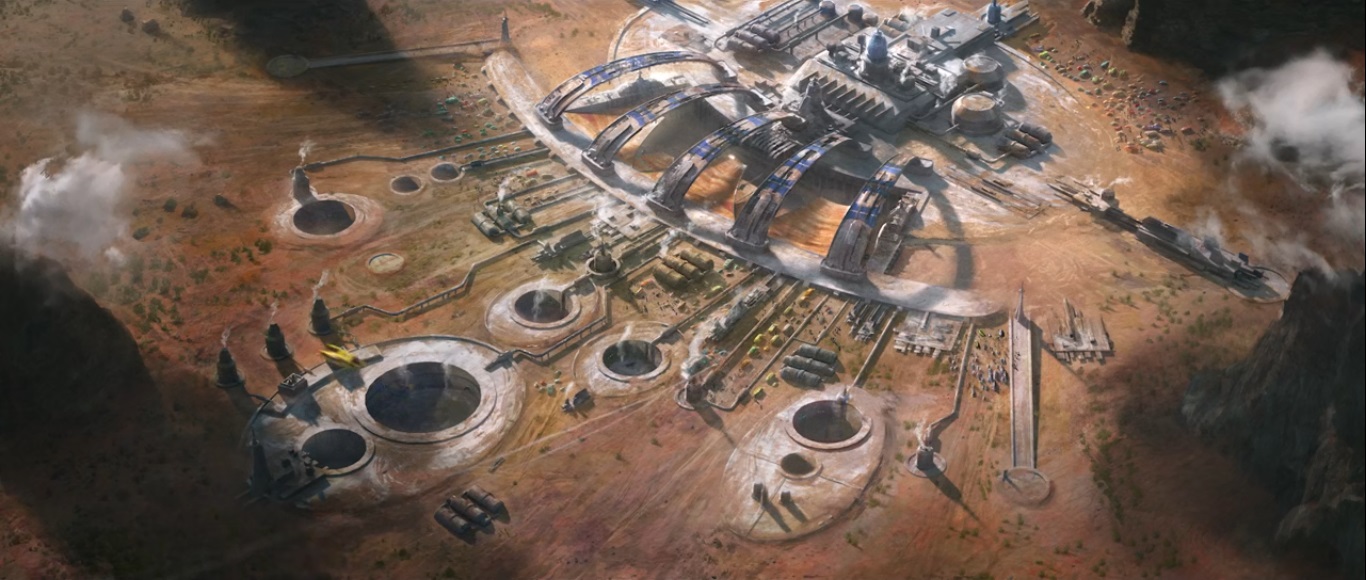
- Riot racing is a kind of track speeder racing with few rules and the free use of weapons by competitors. As a result, the speeders were mostly equipped with
shields. Riot racing required fast reactions and controlled maneuvering by its pilots, since the track was littered with obstacles and automatic traps.
- Although the personality of TAY-0 is possibly a bit too human for a droid, his droid 'psychology' is consistent with a certain sub-section of droids who act
prideful and even condescending towards organic beings, in an over-stated manner which suggests they are used to being looked down upon. Droids
are typically proud of their abilities and their capacity to perform their designed function at a high-level, and will often boast about them. In the case of
TAY-0, his function of racing means that he can measure his abilities against humans and 'feel' a sense of superiority at his ability to surpass them. He is
also very defensive about this, and probably over-compensates with his boasting to keep potential detractors on the defensive. This kind of complex is
the result of the combinations of these mental states and the learned experience of typical reactions to this mental state, just as it would be in any
organic being. TAY-0 also regards himself as "an artist" in speeder engineering which indicates that he is a relatively intelligent droid, as possessing
the ability to creatively design is not typical of labor droids, and also indicates that he is both proud of this and desires recognition from organic beings.
Main Article: Droid Intelligence
- Grini Millegi is a Dowutin, a large and intimidating humanoid species from the planet Dowut in the Southern Core region. The Dowutins first appeared in
the apocryphal disney 'sequel trilogy.' This is the first appearance of a Dowutin in canon material.
- Tech is victorious in the riot race, and his face is seen up close on screen by a large crowd while his clone nickname is announced at a high profile event.
This could have been an issue, however this backwater world probably doesn't have any Imperial eyes yet. Even if it does have a minimal presence
of agents, informants, or associates, it is unlikely that most Imperials are after them, or are even aware of them. They are officially declared dead in
Imperial records at this point, and even if they were not, the many tens of thousands of individuals already wanted by the Republic/Empire mean it
is unlikely that any one Imperial knows any one wanted person by face or name, unless they are involved in hunting them or have been briefed due
to their known presence in an area. It is unlikely at this point in the Empire that a remote world like Serolonis would have undercover Imperial spies.
- Millegi warns the Batch that Cid isn't worthy of their loyalty and efforts on her behalf, since she won't always return the favor. Cid will ultimately betray them
to protect herself and profit, despite the Batch's efforts and risks that they continue to make on her behalf, and what she should owe them for this.
ANALYSIS
The examples of Kamino and Serenno City indicate that while it was dangerous to be the enemy of the Sith, it was fatal to be their friend. Those who play
the grand game of politics and empire consider groups of people to be their pawns, and that certainly includes their own people. The victims of defeated
empires and tyrants are usually remembered as evidence of their barbarism and the need to have defeated them, but so often forgotten is that the people
of their own nation are more often than not amongst their greatest victims. Their sons and daughters are the ones to die for their imperial goals, and their
wealth is used to fund it, and when their foreign victims ultimately come to remove them from power, their own population is usually destined to bear
their enemies' wrath during both the conquest of their nation and subsequent retribution. The people of Serenno, like those of many of the primary
Separatist member worlds, would see their prosperous and peaceful existence destroyed by the greed and ambition of their leadership. The war ruined
interstellar economy, and the need to fund it necessitated draining these worlds' wealth. Dooku cared nothing for the prosperity of Serenno, and only used
them as his power base for his galactic ambition. Once Dooku was dead and the war lost, Serenno City's people were all that were left to take vengeance
upon. This was not inevitable, as not all conquerors are equally brutal with a defeated population, however it was inevitable with the Sith involved.
The Sith have no problem with mass murder, but their violence usually has a point and Sidious certainly was not angry at the people of Serenno for Separatist
war crimes. Serenno City, like Kamino, was eliminated to remove any possible evidence of Palpatine's connection to Dooku or his role in engineering
the Clone Wars. Also, the Sith always eliminate their allies once they have outlived their usefulness as a matter of principle, since the Sith do not share power.
The culture of Serenno was not eliminated, however it has been removed as an important player in interstellar politics for at least several generations.
This was the fate Sidious had desired for all the prosperous yet independent minded worlds of the galaxy, which is why his Sith proxy Dooku encouraged
such worlds to identify themselves as such, then gathered them all together into an alliance which was destined to lead to their destruction and occupation.

The spoils of war are often retained by the victorious side, regardless of the original origin of those items and wealth, as a matter of social tradition, the 'right'
of having earned it through battle, and the practical reality of being the most powerful force left which leaves no one to take it from them. It is fair to say that
the Empire did loot much of the conquered wealth that remained unspent throughout the Separatist Alliance, however this was primarily in the form of
the nationalization of the companies, industry, and resources of the treasonous galactic trade guilds. Most of the inherent wealth of Separatist member worlds
had already been drained by the Separatist government to fund the war, and most of what remained could not be seized by the Empire without collapsing
the tenuous stability of these worlds which the Empire intended to integrate back into the central government. The exception to this would be the hordes and
financial resources of the Separatist government and its leaders, which Sidious knew exactly where it all was thanks to his being the Separatist Alliance's actual
leader. This wealth would be directly appropriated by the Empire, most especially Dooku's massive horde of treasure. This included all manner of riches and
precious objects, treasures from across the galaxy, and even strange or possibly powerful objects. Dooku collected all of this to fund the war and his many
objectives, and also as part of his plan with Sidious to loot the galaxy. Now that Dooku has been dealt with by his new Sith apprentice, Sidious can openly
transport this haul directly to his secure facilities, all as part of a seemingly normal post-war operation being conducted by a victorious government.

The first year and a half of Imperial rule will see the Empire regularly engaged in suppressing resistance or revolt amongst obstinate Separatist holdouts,
primarily in the more remote regions of the Rim. Thousands of the most important Separatist worlds were subject to full scale occupation in the immediate
aftermath of the Separatist government's 'surrender', however resource limitations and political tact led the Empire to initially ignore isolated Separatist
worlds of moderate size which were not considered high priority. The Empire would systematically absorb these worlds in a more careful fashion, which
usually began with dispatching a new governor from the Emperor's military government to oversee the integration process. The governor and a small
delegation would be dispatched as a tripwire force, which would appear non-threatening. The reaction of the planet's government to this new governor
would determine the level of force the Empire would need to use to successfully install its authority. This allows the Empire to maintain the appearance of
civility and due process, and to claim self-defense in any instance where the resistance became violent. This policy is essentially unchanged from that of
the Republic during the Clone Wars, and thus does not create any uproar in the Senate. The Empire then uses the ploy of agreeing to negotiations as
a cover for their inevitable strike. Many of these Separatist worlds were capable of mounting significant defense armies, and some had even reactivated
Separatist battle droids which had been part of the galaxy-wide shut down, however the lack of Separatist fleet resources and significant droid starfighter
protection meant that all of these attempts at maintaining independence, no matter how well-equipped, would be overwhelmed by orbital firepower
and Imperial air superiority. The strongest resistance would simply lead to greater destruction of the planet, making revolt very unwise at this juncture.
Worlds which attempted to insist upon their sovereignty quickly discovered the Empire would tolerate independence even less than the Republic.

FURTHER ANALYSIS
Report Pending